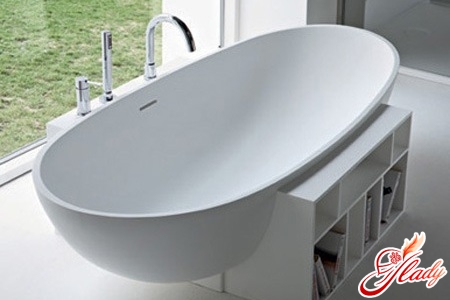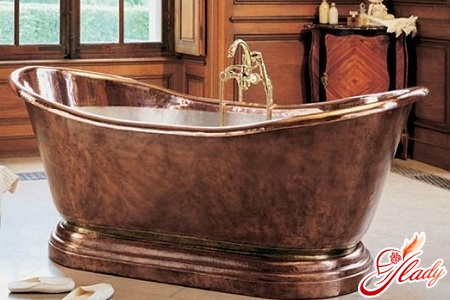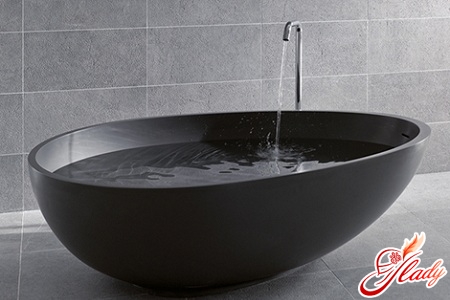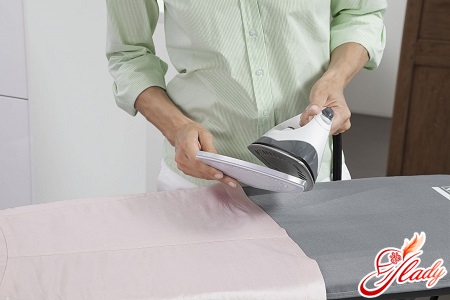 A bathtub, which is in every apartment today,has more than one millennium in its history. Archaeologists have discovered 2,500-year-old ceramic bathtubs on the island of Crete, and a specimen found in the ruins of one of the ancient Indian cities had lain there for more than 5,000 years. A bathtub was also found during excavations in Pompeii - this is one of the first bronze bathtubs. The procedure of taking baths, having survived centuries, remains a favorite today. The bathroom in our house is a fenced-off area where cleanliness and comfort reign. Almost everyone, arranging their home water area, starts with the main thing - with a bathtub. Here we will tell you about their design, varieties and manufacturers, and also help you figure out which bathtub to choose: cast iron or acrylic. Choose a bathtub based on the size of the room and what you need. Do you want to have a small, but private beauty salon in your separate home? Then, when deciding which bathtub to choose, install a hydromassage bathtub. Or maybe you prefer to spend hours basking in fragrant foam? Then a traditional bath will suit you better. When thinking about which bath to choose, determine in advance the role of the bath in the interior of the room, its shape and location. In addition, the safety of water procedures, the choice of a mixer, shower set, etc. are important. Experts advise when choosing a bath to objectively assess your build, mentally, so to speak, try on the bath. You should understand that the bath should be comfortable. The most valued thing in the design of the bath is its ergonomics. We have touched on only the most basic aspects here. A more detailed conversation about which bath is better to choose, we will begin with a review of the materials, because they determine the technical equipment of the bath, its design features, design, shape, size and installation. Baths are made of cast marble, natural stone and other composite materials: solid wood, copper, bronze, steel, cast iron, acrylic and even glass. But products made of glass, wood and copper are considered special designer delights, while those made of cast marble and composite materials are generally little known and are made mainly to order. In mass production, priority is given to steel, cast iron and sanitary acrylic. Therefore, it is among them that we will consider which bathtub to choose.
A bathtub, which is in every apartment today,has more than one millennium in its history. Archaeologists have discovered 2,500-year-old ceramic bathtubs on the island of Crete, and a specimen found in the ruins of one of the ancient Indian cities had lain there for more than 5,000 years. A bathtub was also found during excavations in Pompeii - this is one of the first bronze bathtubs. The procedure of taking baths, having survived centuries, remains a favorite today. The bathroom in our house is a fenced-off area where cleanliness and comfort reign. Almost everyone, arranging their home water area, starts with the main thing - with a bathtub. Here we will tell you about their design, varieties and manufacturers, and also help you figure out which bathtub to choose: cast iron or acrylic. Choose a bathtub based on the size of the room and what you need. Do you want to have a small, but private beauty salon in your separate home? Then, when deciding which bathtub to choose, install a hydromassage bathtub. Or maybe you prefer to spend hours basking in fragrant foam? Then a traditional bath will suit you better. When thinking about which bath to choose, determine in advance the role of the bath in the interior of the room, its shape and location. In addition, the safety of water procedures, the choice of a mixer, shower set, etc. are important. Experts advise when choosing a bath to objectively assess your build, mentally, so to speak, try on the bath. You should understand that the bath should be comfortable. The most valued thing in the design of the bath is its ergonomics. We have touched on only the most basic aspects here. A more detailed conversation about which bath is better to choose, we will begin with a review of the materials, because they determine the technical equipment of the bath, its design features, design, shape, size and installation. Baths are made of cast marble, natural stone and other composite materials: solid wood, copper, bronze, steel, cast iron, acrylic and even glass. But products made of glass, wood and copper are considered special designer delights, while those made of cast marble and composite materials are generally little known and are made mainly to order. In mass production, priority is given to steel, cast iron and sanitary acrylic. Therefore, it is among them that we will consider which bathtub to choose.
Cast-iron practicality
In the table of ranks of baths the first step is rightfullycast iron bathtubs, the production of which began in the century before last. The casting process is very complex, and cast iron especially. Therefore, there are not so many factories that produce cast iron bathtubs. The appearance and service life of the product are determined by enamel. Baths are covered with uniform durable matte or glossy enamels, white or colored. The enamel is applied in several layers: first liquid, and then, for fixing, powder. One of the most important components used by European manufacturers are titanium salts, which make the surface less susceptible to wear and smoother. Some manufacturers, including Russian ones, add silver ions to the enamel, with the help of which not only the surface of the bathtub itself becomes hygienic, but also the water is purified. And if the question is which bathtub to choose from cast iron, then it is better to give preference to this one. Pros Cast iron bathtubs have an impeccable reputation, because the enamel coating on them is reliable and durable. It is distinguished by the impeccable shine of a silky smooth texture. The glossy surface and the absence of pores prevent dirt from accumulating. Due to the damping properties of cast iron, such bathtubs are the “quietest” because they are not subject to vibration due to the graphite elements included in the cast iron structure. Cast iron bathtubs not only do not resonate when pouring water hits the wall, but also muffle this sound. Another undoubted advantage of cast iron is its low thermal conductivity. Cons The disadvantage of a cast iron bathtub is its massiveness. Transportation, lifting and lowering floors, especially in the absence of an elevator, installation and dismantling - all this can be a problem. European manufacturers reduce the weight of bathtubs to about 130 kg by reducing the thickness of the walls. Domestic cast iron bathtubs have a wall thickness of 7-10 mm, and European ones with a bottom thickness of 8 mm have a wall thickness of 5-6 mm. Another disadvantage is that a cast iron bathtub takes a long time to warm up. But the most vulnerable component of a cast iron bathtub is enamel. No matter how strong it is, it is afraid of mechanical damage. It is not difficult to chip off the enamel in the bathtub, especially if you drop a heavy metal object in it. But it is impossible to restore a bathtub at home. Therefore, when choosing a cast iron bathtub, pay attention, first of all, to the surface of the bowl. It should be perfect. You should not buy a bathtub with caverns and black spots. A slight bumpiness, which is called "cast iron cellulite", is inevitable on cast iron bathtubs. It can be seen if you look at the walls at an angle. But if "cast iron cellulite" is determined by touch, then the product is of poor quality.
Steel lady
Consumers deciding which bathtub to choose haveThere is some prejudice against steel bathtubs: they make a lot of noise, can deform under load, and the water in them cools down quickly due to the high thermal conductivity of steel. These complaints are fair, but only in relation to bathtubs with thin walls. Steel bathtubs appeared at the beginning of the twentieth century and were then welded from several thin segments. In the fifties, a solid bathtub stamped from a single sheet was released in Germany. The enamel for steel bathtubs includes natural glass-forming materials, such as quartz. Enameling is carried out in special furnaces at a very high temperature, resulting in a thin coating baked into the steel, which not only does not peel off, but also does not lose its original shine and whiteness throughout its entire service life. Pros Steel bathtubs are easy to maintain. And now they also produce bathtubs with a self-cleaning effect. The water in them, collecting in drops, captures almost all the dirt. The weight of steel bathtubs is also attractive – it is four to five times less than that of cast iron bathtubs. These bathtubs are distinguished by their ergonomic design, which features wide sides, comfortable chrome handles, armrests, anti-slip system, towel bars encircling the bathtub, etc. And if these elements are of decisive importance to you, then don’t think any more about which bathtub to choose. Cons They exist only in bathtubs with thin walls, 1.5-2.3 mm thick. Such a bathtub can deform, which will inevitably lead to cracking of the enamel. Chips and dents can form in a short time. In thin-walled bathtubs, the water cools down quite quickly, and they “rattle” when filled.
Acrylic Top Models
Acrylic bathtubs have appeared on the domestic marketmarket in the mid-nineties of the last century and were initially perceived as some kind of curiosity. But recently they have actively entered our lives, and many, deciding which bathtub to choose, give them preference. Real acrylic bathtubs are made of polymethyl methacrylate. In a special thermal cabinet, sheets of this material are heated to 130-180 ° and atmospheric pressure presses the sheet into a mold, where it takes the desired configuration. Reinforcement is used to strengthen the bathtub. Moreover, it is made in several layers, and the more of them, the more rigid and reliable the product. It is clear that the greatest load in the bathtub falls on the bottom, so it is reinforced with a frame made of metal rods or a form made of chipboard. Rigid acrylics are considered more reliable among acrylics, but for creating bathtubs of complex outlines, it is better to use plastic, and therefore less rigid acrylic. The high cost of acrylic and the complexity of implementing various forms have created the need to find alternative solutions. And it was a combined sanitary plastic ABS/PMMA, which is obtained by coextrusion. Bathtubs made of this material are also called acrylic. Bathtubs are formed from coextruded plastic in the same way as from cast acrylic, but it allows for more complex geometric design ideas. Pros Acrylic bathtubs are warm to the touch, they retain water temperature well and have good soundproofing properties. Their surface, being smooth, does not slip and has antibacterial properties. Acrylic bathtubs are characterized by excellent shine, depth and purity of color. Moreover, the choice of colors is unlimited - more than ten shades of white are offered. Acrylic bathtubs are beautiful, easy to care for and meet all the requirements of modern design. There is no geometric shape that would not be embodied in this material: ellipse, circle, triangle, rectangle, hexagon, heart, trefoil, trapezoid, etc. One of the advantages of such bathtubs is the possibility of their restoration at home. Scratches on its surface can be carefully rubbed with fine sandpaper, and then refreshed with polishing paste. There is an easier way: wipe with a soft cloth and toothpaste. Cons An acrylic bathtub is not suitable for the prose of life. You cannot soak or wash laundry in it. Its shiny glossy surface can easily be scratched or melted if a lit cigarette falls into it. And, of course, a high-quality acrylic bathtub is more expensive than cast iron and steel bathtubs. We tried to tell you about all the advantages and disadvantages of bathtubs made of different materials. Now you can, in accordance with your own preferences and requirements, as well as the design of your bathroom, decide which bathtub to choose and select the model that suits you best in all respects. We recommend reading:








